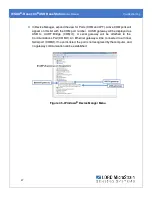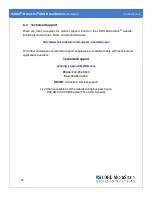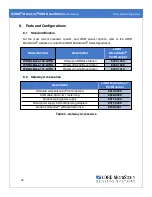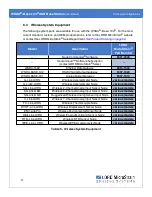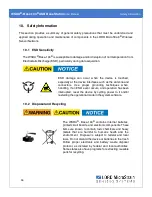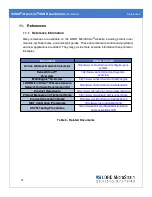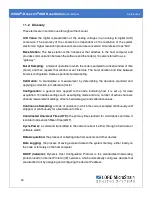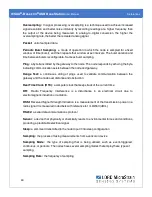
WSDA
®
-Base-104
®
USB Base Station
User Manual
References
60
Oversampling:
In signal processing, oversampling is a technique used to achieve increased
signal resolution and better noise immunity by recording readings at a higher frequency than
the output of the device being measured. In analog- to- digital conversion, the higher the
oversampling rate, the better the recreated analog signal.
Packet:
unit of sampled data
Periodic Burst Sampling:
a mode of operation in which the node is sampled for a fixed
window of time (burst), and then repeats that window at set intervals. The burst duration and
time between bursts is configurable. Same as burst sampling.
Ping:
a byte transmitted by the gateway to the node. The node responds by echoing the byte,
indicating communication exists between the node and gateway.
Range Test:
a continuous string of pings used to validate communication between the
gateway and the node over distance and obstruction
Real Time Clock (RTC):
a computer clock that keeps track of the current time
RFI:
Radio Frequency Interference is a disturbance in an electrical circuit due to
electromagnetic induction or radiation.
RSSI:
Received Signal Strength Indication is a measurement of the transmission power in a
radio signal. It is measured in decibels with reference to 1 milliWatt (dBm).
RS232:
a serial data communications protocol
Sensor:
a device that physically or chemically reacts to environmental forces and conditions,
producing a predictable electrical signal
Sleep:
a command transmitted to the node to put it into sleep configuration
Sampling:
the process of taking measurements from a sensor or device
Sampling Mode:
the type of sampling that is being utilized, such as event- triggered,
continuous, or periodic. The nodes have several sampling modes that employ these types of
sampling.
Sampling Rate:
the frequency of sampling


